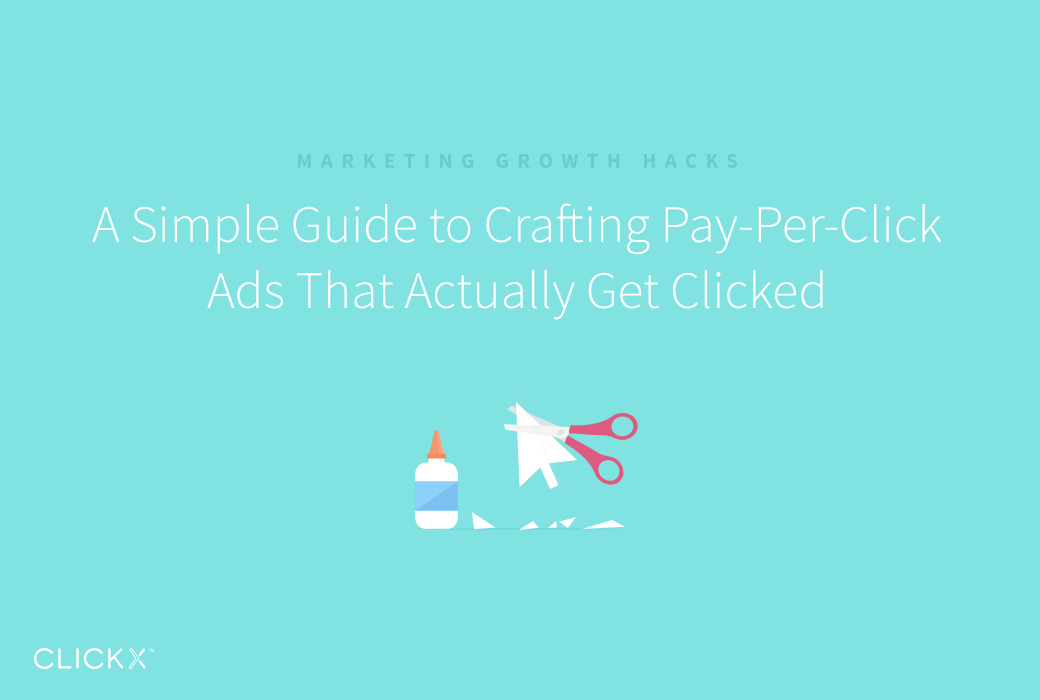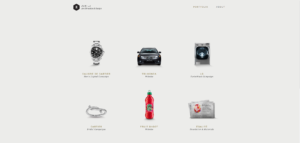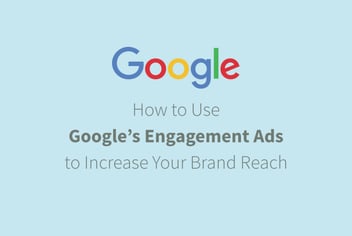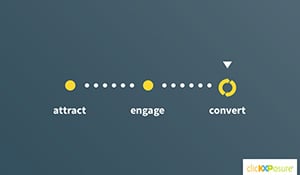A Simple Guide to Crafting Pay-Per-Click Ads That Actually Get Clicked
You spend a lot of time improving how effective your landing pages are—don’t let that potential go to waste by running PPC ads that don’t get clicked!
By designing ads that are not overlooked and intrigue potential visitors, you naturally increase the likelihood of getting those coveted clicks.
Are you ready to learn how to grab attention and inspire intrigue? Get those clicks by following our guide when crafting your PPC ads.

What Makes an Ad Clickable?
Online advertising has gone far beyond simple banner ads. Users easily tune out ‘spammy’ advertisements. Successful PPC ads require more attention to detail so that each fits into its new environment—whether that be Facebook, Twitter, AdWords, or any other PPC advertising platform.

What makes ads clickable?
“Fitting into the environment” means that your ad doesn’t feel intrusive, but instead like a genuine content recommendation.
[Tweet “Your ad shouldn’t feel intrusive, but rather like a genuine content recommendation.”]
Granted, it’s not easy to create genuine sounding ads, but it’s well worth the effort. Ideally, by following the steps below, your ad will not only feel genuine, but look professional to boot.
All in all, clickable ads:
- fit into their environment,
- earn viewer interest, and
- offer something worth clicking for on the other side.
For a little more information, we recommend reading about the elements required for great PPC ads. In this post, we’re helping you actually craft your ad using those elements.
With that said, let’s get into the nitty gritty of crafting highly clickable PPC ads!
Design at the Appropriate Size
Enlarged, reduced, and distorted ads simply look unprofessional and detract from your message.
Most platforms come with their own sizing standards to help ads fit in with the native content, so before you start ad design, consider the platform it will launch on and what the sizing requirements will be as you build out your ad campaign.
Each platform will have resources for you about what sizes are appropriate, but to get you started you can check out this social media ad sizing cheatsheet by Hubspot. AdWords already provides a cheatsheet of their own.
Address the Customer’s End Goal

Before you write your ad, check word limits for each type of ad you create and adjust your messaging accordingly.
Much in the same way that image sizes vary per platform, the amount of characters you can use change as well. You should consider not only your limitations, but what kind of content readers are expecting to see on that platform. For example, Facebook users are more accustomed to more wordy sentences, while a Twitter user would be expecting short quips.
But, no matter how many characters you have to work with, your ad will earn interest by addressing the target customer’s pain point and offering the end goal.
- Bad ad example: “Tired all the time?”
- Good ad example: “Feel Energized Without Caffeine”
The first example asks a question. People don’t want to be asked questions—they already have enough of those. The second offers a very specific type of answer. It tells you that by clicking you can become energized without the use of caffeine. Now that’s interesting.
Along the same lines, if you can be specific using numbers and data, do so! Let’s use a famous example—Geico—to see what your ad might look like before and after:
- Bad ad example: “Save Money on Car Insurance”
- Good ad example: “Save 15% in 15 Minutes on Car Insurance”
The first is pretty general. There are a lot of car insurance companies out there saying that they’ll save you money. The second example tells you exactly how much you can save in how short of a time.
Stating a very specific solution is more likely to catch attention than vague questions or statements.
[Tweet “Stating specific solutions will catch more attention than vague questions.”]
Add Emotion With Compelling Images
Pair a compelling image with your ad’s message to create an emotional connection.

Like pairing cheese with wine, you want to choose an image that brings out the true emotions of your message. How do you accomplish this? If you’re addressing a pain point, that often comes with a great visual.
Is it a messy house? Feeling drowsy? Peeling paint? Broken water pipes? Find that pain point and make a visual connection.
But, don’t just choose any photos—use professional images so it does not detract from the message with elements like bad lighting or poor composition.
It’s much better to use real photos of your business rather than stock photos, but if you must use stock photos, be creative about it.
Once you’ve come this far, one last step is to match your choice of imaging with your branding’s color scheme to provide a more consistent user experience. There are a few free tools to help you see the color scheme for any given image—two good ones are Pictaculous and PalleteFX.
Follow Basic Design Principles
Using good design helps establish trust with the viewer before they ever decide to click your ad. This trust is built in a few ways:
- A clear investment of time and care went into the ad.
- The ad seems as if an actual human being created it.
- It attempts to solve an actual problem for the viewer.
- The viewer can focus on the message without being turned off by poor aesthetic.
Trust with the viewer is important, as 57% of viewers fear that clicking an ad will lead to spam. Your ad needs to find its way into the right side of that statistic.
Not being a graphic designer by trade shouldn’t stop you from taking the time to learn some basic design principles to help you achieve your goals.
Use Clean Design
Clean design is organizing information in a way that makes sense by using white space. That sounds straightforward, but it’s easier said than done. When you get the hang of using empty space effectively, it really shows in the end result.
Learn more about clean design here.
Learn How to Choose and Pair Fonts
Good typography goes a long way in creating a beautiful design that builds trust, because not many small business owners take the time to figure it out. If you can learn how to choose and pair fonts effectively, you’re already ahead of the design game.
Learn the basics for typography here.
Conclusion
Don’t let your landing pages and PPC budget fall flat due to poorly designed ads!
By crafting well designed ads that earn trust and communicate emotionally with the viewer’s needs, your click through rates should see a notable increase.
Feeling motivated by your progress? Take it to the next level by experimenting with different versions of your ad to see what connects best with your audience. Try out variations on wording, images, and colors to see what gets clicks (and throw out what doesn’t).
What have you found works best for your click through rates? Share your results in the comments section below!
Images: Karolina Grabowska, Daniel Carlbom





